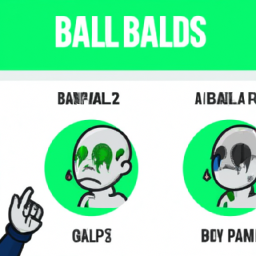Paintball Pain How Bad
How Bad Does Paintball Hurt
Exploring How Bad Paintball Hurts
Pain Thresholds and Perception
When it comes to paintball, there is a certain range of pain that all players can expect to experience. Ultimately, it's down to a player's individual pain threshold, how well they handle the impact, and the distance from which the ball is fired. Generally, being hit at a distance of 15 feet results in a bruise similar to a bee sting while shots from a closer range can be more intense.
For an adult paintball player, the sensation of being hit is often described as being comparable to a stinging slap or an aggressive pinch. But there can be a wide array of responses, and the experience can vary greatly among people. Some players have reported getting struck with a pellet and barely feeling a thing while others have noted an intensity that can cause minor bruising and puffiness. The severity further increases when multiple shots are experienced simultaneously.
Pain Prevention and Reduction
In order to reduce pain and discomfort from paintballing, there are a few steps that can be taken: from wearing protective gear to instituting safety precautions.
- Make use of a helmet, chest and neck protection to lessen the blow of any hits.
- Protect your limbs with thick clothing or extra padding, such as forearm and shin guards.
- Install a permanent netting at the playing area to prevent stray pellets.
- Distance yourself from the other players.
- Keep an eye on the terrain as you move some surfaces create a greater impact.
- Stand up straight, manage your breathing, and brace for shots.
The Impact of Paintball Technology
With technological advancements, the intensity of paintball has been altered drastically. Modern paintball markers enable players to fire pellets at much faster speeds than ever before. This makes for a more immersive and dynamic experience, but can also lead to a heightened sense of pain and discomfort. It should be noted that the faster the ball is traveling, the more it stings.
More expensive markers and equipment often provide more accurate and consistent shots, allowing for tighter groupings of hits and greater accuracy with each shot. This may be beneficial for the experienced player at the cost of an increased pain burden. It is wise for players considering more expensive gear to factor in both the added benefit and extra sting before settling on an equipment purchase.
Potential Long-Term Effects
Though generally a safe sport, some medical studies have suggested that paintball can lead to bruising, cuts, and other injuries. It is generally advised that paintball should be played with caution and that participants should always take necessary safety precautions.
The long-term effects of paintballing, especially when it involves risky behavior, can be determined by further research. In some cases, pain, swelling and bruising can last for days afterwards, while other times, there are no lingering effects. For more serious incidents, nerve and tissue damage can be sustained, leading to pain which may last weeks or even months.
Insights
Paintball is an exciting, action-filled game that can be enjoyed by players of all ages. However, the threat of pain should not be taken lightlypracticing safe behavior and taking necessary precautions are important steps to reduce the severity of the experience. Players should also take note of their own individual pain threshold and be aware of the impact that different gear and distances may have on the intensity of the game.
When the rules of the game are followed and appropriate safety measures are taken, paintball can be an enjoyable and rewarding experience where players can safely test their limits.

Previous Page
Next Page
